Turangi Fly Fishing Report | June 2023
When it comes to fly fishing, there are those than can do it, those that can take photos, and even rarer in fly fishing, are those that can write about it. Thankfully for you we have the triple threat of fly fishing, Thomas Clancy, who can do all three. The lucky so and so just spent two weeks in one of NZ's most popular fly fishing locales and has submitted his report. He's lucky, and you get to share in it too.
A few weeks ago, two mates and I descended upon the uber fishy town of Turangi and spent fourteen days exploring the winter playground that is the Central North Island fishery. Low, clear rivers with no substantial rain on the horizon meant we assumed we’d we’d have our work cut out for us. And, while the local reports from tackle stores and fellow anglers we met on the rivers seemed to back this up, the reality couldn’t have been further from the truth! We had a blinder of a trip with hundreds of fit and feisty chrome slabs gracing our landing nets. Every new day on the river brought with it red-hot fishing, with multiple double and triple hook ups, and even a few solid browns in the mix to keep things interesting.

With the Tongariro experiencing patchy runs during our stay, we opted to invest our time on the other smaller tributaries which ultimately proved to be the right move. These rivers were even lower and clearer than the Tongariro, but we made the most of the cards we were dealt and adapted our approach to suit. If I had to sum up the key to our success in three words they would be: subtlety, quality, and comfort. Luckily, the boys at Manic haven’t given me a word count, so I’ve thrown together a couple of hundred more below that should hopefully help you out if you’re ever in the region and are presented with less-than-ideal winter run conditions like we were.
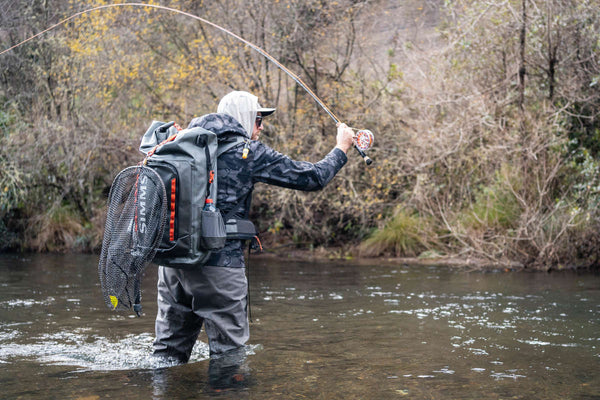
The low, clear water on the Taupo tributaries called for a more finesse approach than what is typically associated with the Central North Island’s winter migratory runs. 12–14-foot leaders of 3X and 4X fluorocarbon tippet from the Trouthunter stable made sure we were equipped with the perfect balance of strength and finesse in the clear water. There are no shortage of submerged timber and other fly hungry nasties throughout the smaller tributaries (overhanging blackberries, anyone?), and by running a quality fluorocarbon like Trouthunter meant we could fish as light as we needed while still having the confidence to muscle fish from their snaggy lairs. And, when the snags did get the better of us, retying and getting straight back into the thick of it was never an issue as the generous 50 metre spools from Trouthunter meant we were never left high and dry on the river.
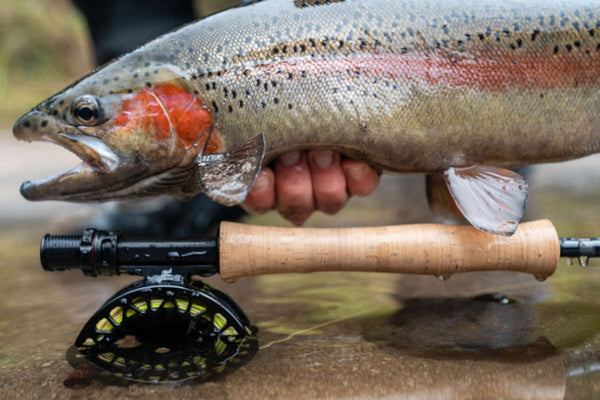
Next up, the flies. With the rivers clear enough to see the fish as they rejected our offerings, bright and gaudy flies were a definite no. We ran the typical truck and trailer rig synonymous with the fishery: a bomb style fly followed by a trailing nymph or globug. I’m a firm believer that the ‘bomb’ doesn’t need to be sacrificial, so opted for the the Manic Fly Collecttion, Simon’s Ugly in Hare & Copper and Pheasant Tail. In sizes 14 and 12, they were the perfect combination of functionality and finesse: the double tungsten beads anchoring your rig to the bottom and the slim, buggy goodness and natural colourways proving irresistible to fish. We caught just as many fish on the Simon Uglies bomb as we did on the trailing fly over the course of our trip. Stand out trailing flies were the Manic Clearwater Caddis in size 14 and the Manic Otter’s soft egg in opaque apricot in both sizes 12 and 14. The more subdued opaque apricot colour really came into its own in the low, clear water and drastically out fished the brighter, more ubiquitous glo bug colours. As the day got on, we found dropping down to the smaller soft egg in size 14 did the trick.
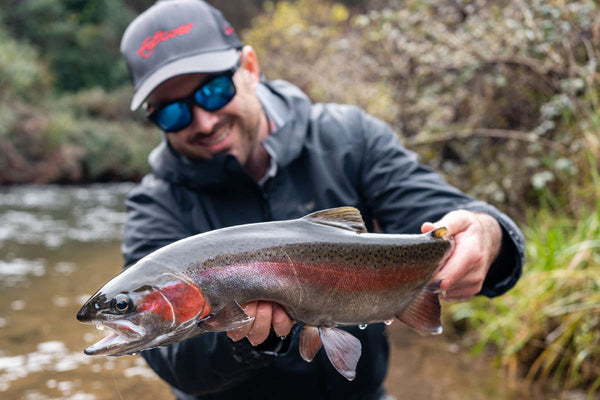
Finally, as far as the rig itself is concerned, we wouldn’t have had anywhere near as the success as we did without the ever-faithful NZ Strike Indicator system. The ability to create such a small and subtle indicator that could not only float some serious weight but also be repositioned on our leader with ease was an absolute gamechanger. To make the great even greater, a quick hit of Loon Aquel the night before meant our indicators rode loud and proud into the sunset the next day, only requiring the occasional reapplication here and there.
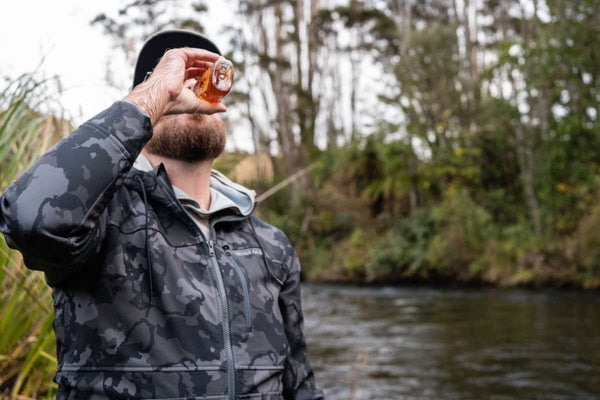
Although conditions were mild for Turangi at that time of the year, it was still damn chilly for a couple of coastal Aussie fellas like us, and we were privy to a few squalls of rain and harsh westerly winds over the course of our stay. Investing in protection against the elements in never money ill spent, I believe, and simply put we just couldn’t have stayed out on the rivers as long as we did if we weren’t comfortable and warm. The Simms Freestone Fly Fishing Jacket gave us the rain and wind protection we needed while also being an extremely functional and impressive piece of fly-fishing kit. Deep pockets for fly boxes and articulated sleeve construction that didn’t cramp our casting style were noticed and appreciated.
On the days we hiked many kilometres upstream to the tribs winter limits, the comfort and lightness of Simms’ G3 Waders matched with Flyweight Wading Boots meant fatigue was never an issue. The robust construction of the G3 Waders also came into its own on the blackberry infested banks of some of the rivers, and I’m happy to report we managed a whole two weeks of fishing without a dreaded wader leak despite our best efforts.
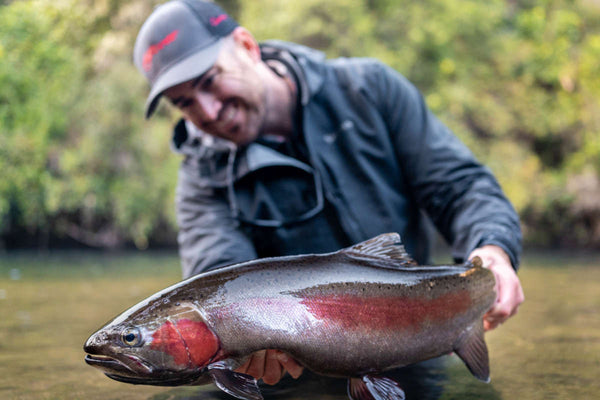
If you’re planning a trip this winter and want to make the most of our time on the water, do yourselves a favour an invest in the right tools for the job. You won’t regret it – we certainly didn’t!
About the Author
Thomas Clancy is more than just a fisho, he's a writer and photographer too. Residing on the coast in New South Wales he is a regular contributor to FlyLife magazine and frequent traveller to New Zealand and beyond. Follow him on Instagram here for some amazing content.
